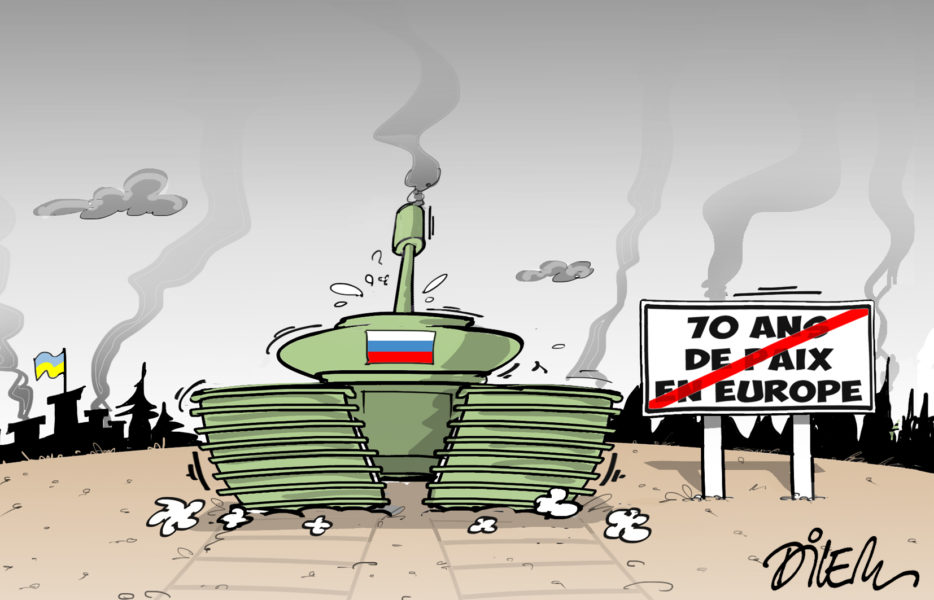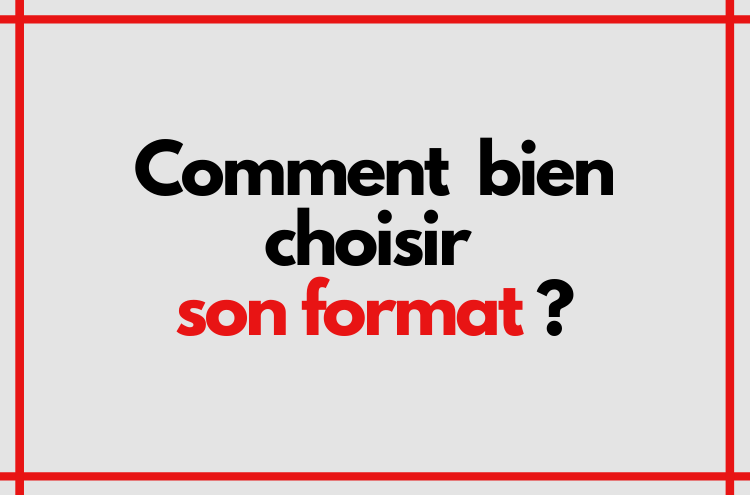To succeed in your subject, it is first of all to choose the right format to treat it! When it comes time to write a brand new article for your blog, the choice is wide. You are faced with a multitude of choices of formats and subjects, and you can sometimes feel lost. To make the right decision, don’t panic, you just need to know the different formats and their characteristics. In this tutorial, we will review eight formats: the report, the interview, the investigation, the report, the editorial/column, the drawing, the social networks.
The report
Reporting means inform by describing. The goal is therefore to use your five senses as much as possible to immerse yourself in an atmosphere, in the place and in the moment of the report. Bringing back some quotes from the people you interviewed is just as important! What you need to remember is that your report must provide new information on the subject you have decided to deal with.
The secret of a good report is to choose an angle. An angle is the small window that will allow you to take the subject from a specific side. For example, you are interested in football. You choose to carry out an investigation into the toxic products present in the lawns of football stadiums. It’s an angle. Another example, if you are interested in period taboo, you can write about first period awareness in schools.
Most important, for hook the reader, is to have a good catchphrase. It can tickle the curiosity of the reader, and push him to read the article. It can also put the reader immediately in the atmosphere of the report, and allow him the most complete immersion possible.
The drop is just as important. This is the last sentence readers will read of the article. This is therefore the sentence on which they will remain. If the fall is bad, the reader will have a bad impression of the article, whereas it could be good.
L’interview
What matters for an interview is find the right person to interview! The person must have a unique point of view or analysis on the subject. The interview, too, must produce information. That is to say a new analysis of a topical subject, which allows the reader to be enlightened on the issues attached to this subject.
The relevance of the journalist’s or blogger’s questions will thus guide the relevance of the answers. Doing a good interview therefore requires a lot of preparation work: it requires knowing your subject well, to anticipate the answers of the interviewee.
Do not hesitate to ask the interviewee to reformulate to clarify his point and make it more accessible to readers. To avoid misunderstandings, you must tell your interviewee beforehand the terms of the interview : give the time of the interview, the device used (if it is television, written press or radio) and the broadcasting framework.
In This interview, journalist Séverine Kodjo-Grandvaux interviews Bénédicte Savoy, art historian, on the restitution of African works of art. His questions are precise and the interview follows naturally thanks to to raises. Very often, the title of an interview corresponds to a quote striking of the interviewee.
Investigation
Investigation is the king format of journalism. It requires, to begin with, a very large research work (which requires time). Once the subject and the delimited angle (this is very important not to go off in all directions), you must then look for everything that has already been done on this subject, in order to be able to base your starting point on what is already known about the subject.
The investigation also requires looking for hard data : figures and/or public information on the subject. It must be formulated in the form of a question. Unlike a news report, the purpose of the survey is to answer precisely this question.
The survey therefore consists of a double task: a research work foreplay and subsequently a fieldwork, with interviews of people who can give you unpublished information on the subject. The survey can thus correspond to different themes around the news that one wishes to cover: political, economic, social issues… The whole thing is to answer a question that has never been asked.
In this examplethe newspaper Liberation investigates a circuit of embezzlement of Congolese black gold receipts.
The feedback
The report is a structured summary of any kind of event. For it to be structured and readable, it is necessary to follow the chronological order of events. Sentences should be short and concise.
The editorial/the breaking latest news
The editorial and the breaking latest news reflect your point of view. This can be an article that only presents your point of view on a book, or on an event (for example, on the strategy of a football team during a competition). The editorial and the breaking latest news must reflect your point of view, but in a structured way.
You can also write editorials or humorous chronicles, include jokes or infuse touches of humor into your analysis of the news or in your editorial.
So think before writing about the framework that your editorial will follow. Its very important. To write about your own opinion, it pays to respect the readers and structure your thought precisely, so that they know where you are going.
An example of an article that shares the analysis of a monblogger on a social subject (here, heteronormativity): “Are you going to be heterosexual all your life? by Emilie Marcelin.
The drawing
For drawing, give way to your creativity. Your drawing just needs to be clear, direct and easy to understand for the masses. In most drawings, there is a dialogue, a bubble, or at least a caption, which explains the drawing.
A drawing on its own, without a caption or dialogue, is usually quite complicated for the reader to understand. Here too, you can give your opinion, or make fun of a current situation.

Social networks
Four formats exist for social networks:
- short videos
- Les threads Twitter
- THE live tweets
- Podcasts
These formats cover the news in a short and summarized way, from a particular angle.
Videos for social networks
These videos are intended to explain the news with some images and impactful videos, and short, simple sentences. These web formats last between 3 and 4 minutes.
They therefore do not offer the time for an analysis but focus on the factual. It can be a short testimonial from a single person, or a news summary. An example of a video for social networks: It allows the poorest to eat in the restaurant on Raw.
Le live tweet
This format is similar to reporting since it is about recounting an event, but and instantly. For this, you must use photos, words of people present at the event, and short sentences by which you tell the event.
For example : if you follow a demonstration, you can make a live tweet to transcribe the progress of the mobilization, you can share videos and photos, share the opinions of those around you.
The idea is to bring the event to life for others.
Le thread
The thread is a sequence of tweets that follow each other into a coherent whole. A thread allows tell a storyan anecdote, in several tweets.
To create a thread, just reply to your own tweets. This creates a thread (a threadin English) driver, and the thread thus builds itself.
Exemple de thread ici.
With a podcast
The most important thing for a podcast is to know your intention. What do you want to show your listener? What’s your angle?
The podcast allows you to do several formats, you can make an audio report, an audio interview or an investigation. You can also do very short news curation podcast formats (about 3 or 4 minutes).
Always keep in mind that a listener will listen to a podcast if he knows precisely what the podcast offers to listen to.
An example of a podcast episode from a blogger on the subject of football: “Compilactusport ep 26: The Beninese U20s on an internship in Morocco and another classico in the Copa del Rey” by Chams-Dine Baguiri.
